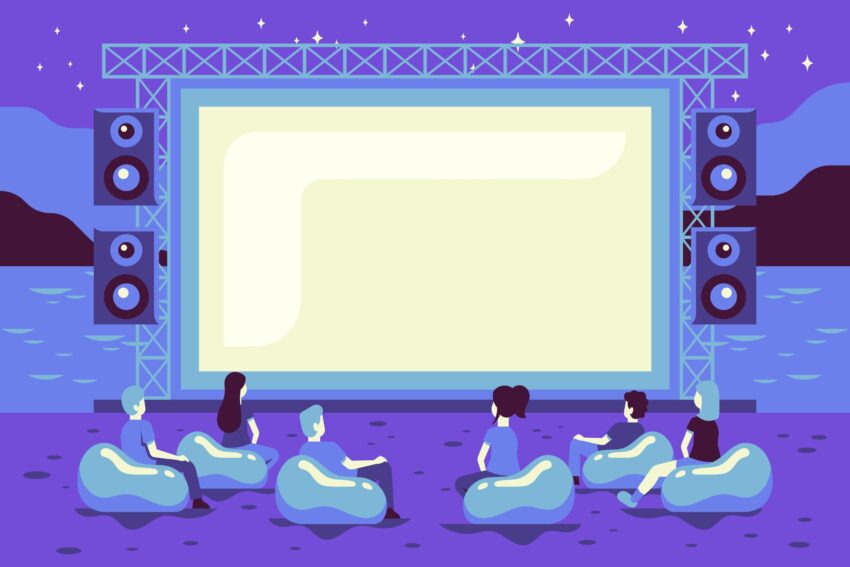Event design involves engaging all the senses to create a memorable experience for attendees. Audio-visual (AV) elements play a big role in shaping perceptions and imparting the desired impression. With advanced av capabilities, event planners now have more tools and technologies at their disposal to immerse audiences and achieve meaningful engagement. This blog will explore the psychology behind incorporating AV elements effectively in event design.
Defining Audio-Visual Elements
For the purpose of this discussion, audio-visual elements refer to any technologies or mediums that convey information through sight and sound. This includes:
lighting – Ambient, mood, stage, projector lighting etc.
Displays – Screens, projectors, LED walls, visualizers etc.
Sound – Music, speeches, effects, announcements etc.
Multimedia – Videos, animations, graphics, presentations etc.
Spatial design – Set pieces, stages,scenography,immersiveenvironments etc.
How AV Elements Impact Perceptions
Research shows sensory stimuli have a significant influence on emotions, moods and perceptions. Well-designed AV elements at events can:
Create memorable first impressions
Enhance engagement and participation
Evoke desired emotions like joy, excitement
Build anticipation and interest
Impart the core message/theme effectively
Foster connections between presenters and audiences
On the other hand, poorly executed AV can undermine the experience through distractions, technical glitches or sensory overload. Event designers must apply psychology principles thoughtfully.
Lighting Design Psychology
Of all the senses, vision is the most dominant. Lighting creates the first and lasting impressions of an event space. Psychological effects of different lighting designs:
Warm white lighting feels inviting and familiar
Cool blue tones convey professionalism and focus
Bright lights stimulate while low lights relax
Spotlights draw attention to key elements
Mood lighting sets the tone and immerses audiences
Gradual transitions between light states feel natural
An intentional, well-planned lighting design can shape the flow and emotions of an event positively.
Sound Design Psychology
Our brains are wired to pay attention to sounds. Appropriate sound design achieves:
Clarity of speech via microphone enhancements
Energetic music pumps up enjoyment levels
Thematic background music sets the scene
Sound effects add production value
Silence allows moments of reflection
consistEnt volume levels prevent listener fatigue
Together, lighting and sounds profoundly impact the psychological experiences of audiences.
Multimedia Design Psychology
Human memory retains visual information better than text. Well-executed multimedia enhances engagement through:
Beautiful, high-resolution video storytelling
Infographics that simplify complex topics
Animated data visualizations that illustrate trends
Interactive displays that provide choices
Augmented/virtual reality simulations of real world scenarios
When designed with psychology in mind, multimedia transforms static content into emotionally compelling experiences.
Spatial Design Psychology
Event spaces also communicate non-verbally. Some spatial design psychology aspects are:
Open floor plans encourage interactions
Divided areas provide options for activities
Comfortable, appealing furniture boosts enjoyment
Plants, artworks provide ambience and stimulation
Wayfinding systems reduce confusion with clarity
Immersive decor connects to theme in an impactful way
Proper spatial design liberates attendees psychologically and maximizes their engagement.
Psychology of Colors in Event Design
Colors substantially influence emotions and decisions. Event design utilizes color psychology thoughtfully:
Red signifies urgency, passion and energy
Orange stimulates creativity and sociability
Yellow expresses optimism, joy and friendliness
Green projects calmness, renewal and sustainability
Blue instills confidence, trust and intelligence
Purple symbolizes luxury, wisdom and spirituality
Neutrals feel sophisticated and polished
Bright pops attract attention in key areas
Incorporating colors based on their psychological meanings enhances the branding and intended atmosphere.
Psychology of Sound in Event Design
Besides enriching the experience, sounds powerfully shape emotions and perceptions in events. Some effective sound design psychology strategies are:
Upbeat background music boosts positivity
Relaxing instrumental tones induce calm
Uplifting speeches motivate audiences
Sound effects complement various stages of programs
Interactive audio engages through participation
Silence allows digestion between segments
With proper treatment, sounds become another psychological tool in the event designer’s toolkit.
Conclusion
With advanced av capabilities, event planners now play a role beyond logistics into experience design. This post explored how thoughtful incorporation of audio, visual, spatial and multimedia elements according to psychological principles immerses attendees emotionally and achieves desired outcomes. When designed keeping human perceptions and behavior in mind, AV becomes a potent tool that transforms events into memorable impressions. Looking ahead, emerging technologies will further enrich live experiences through creativity.


